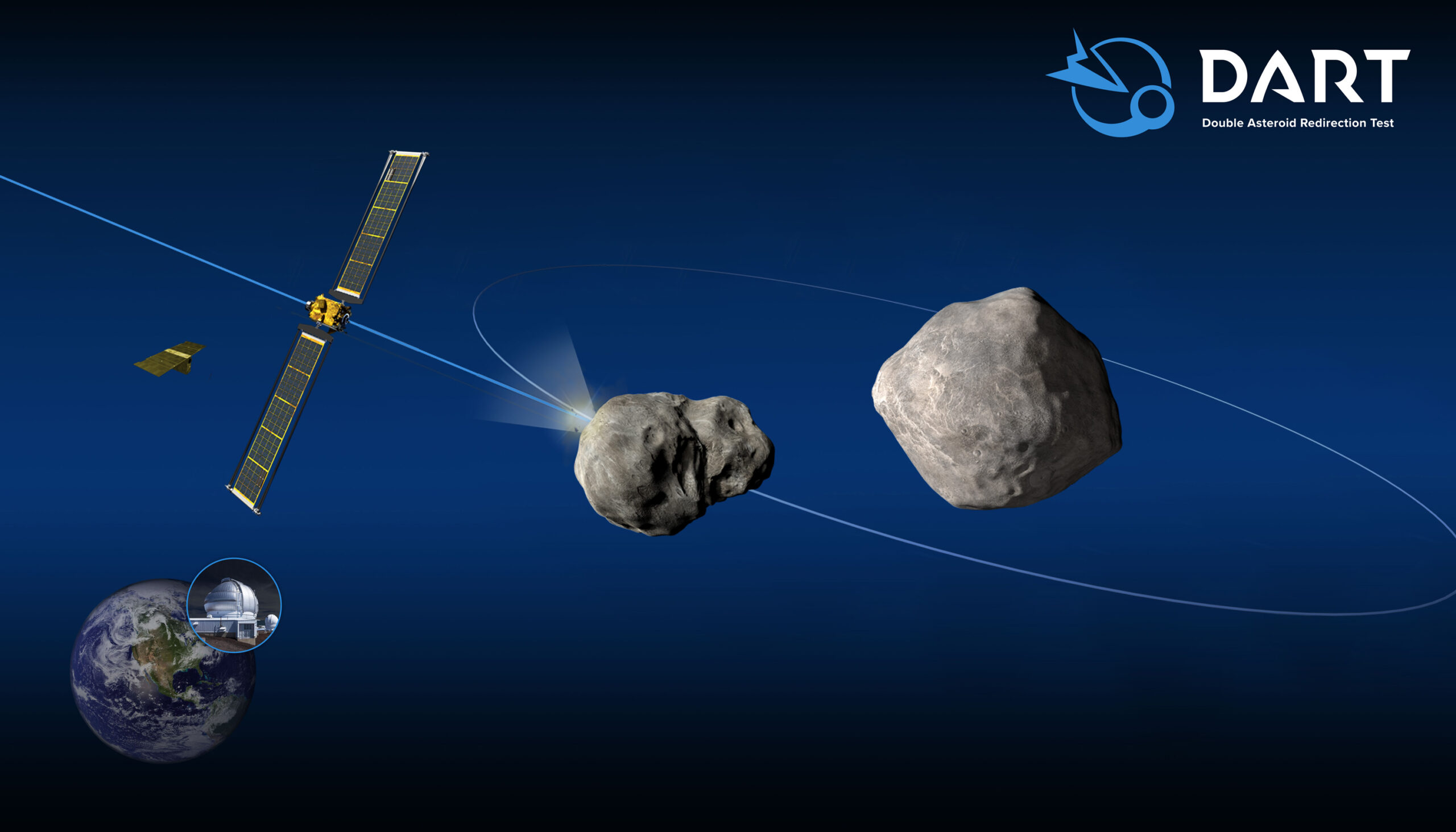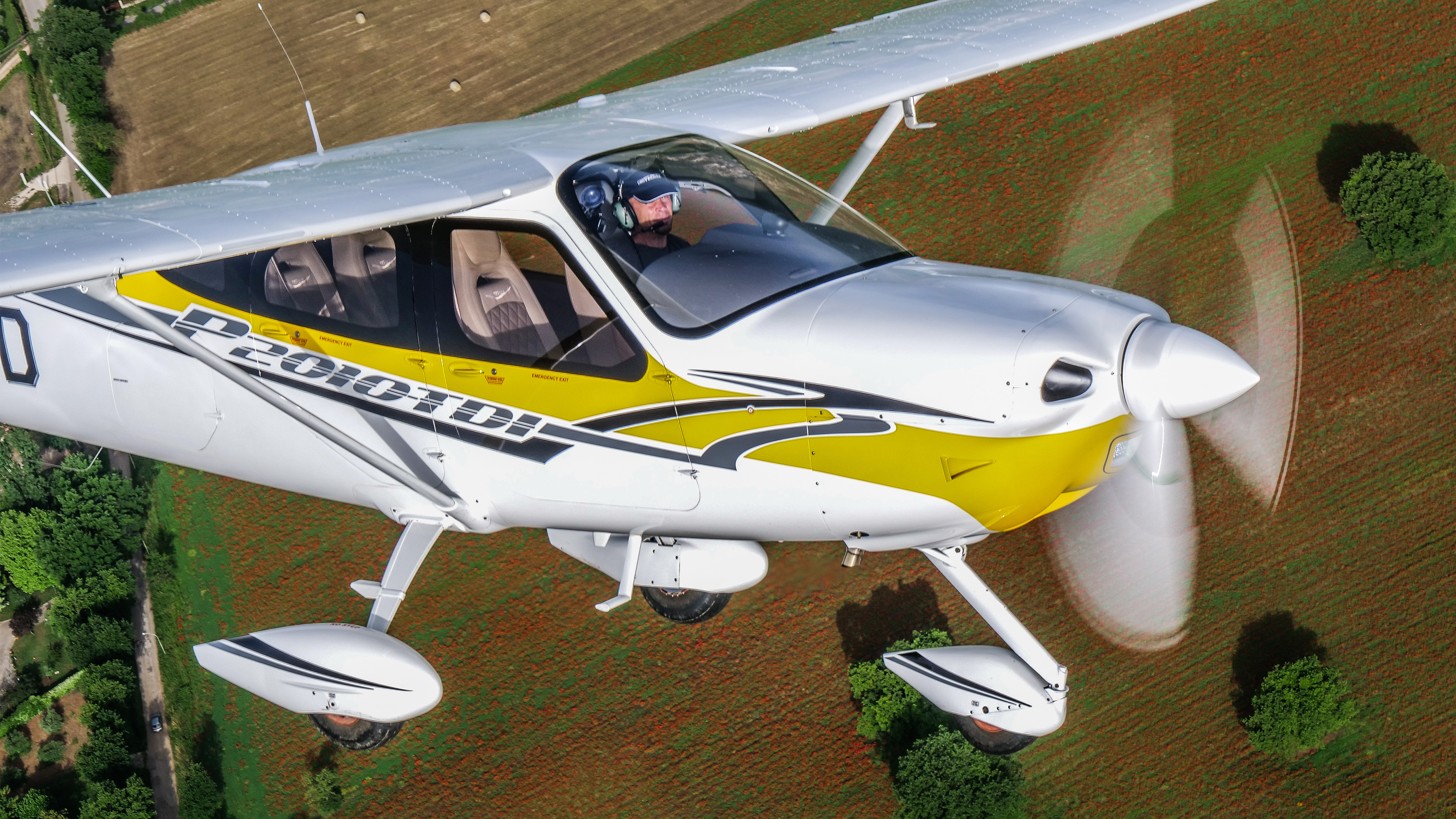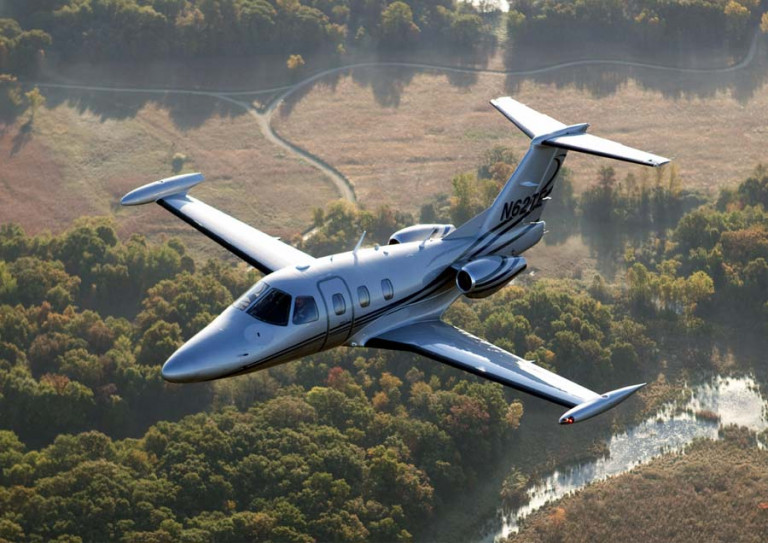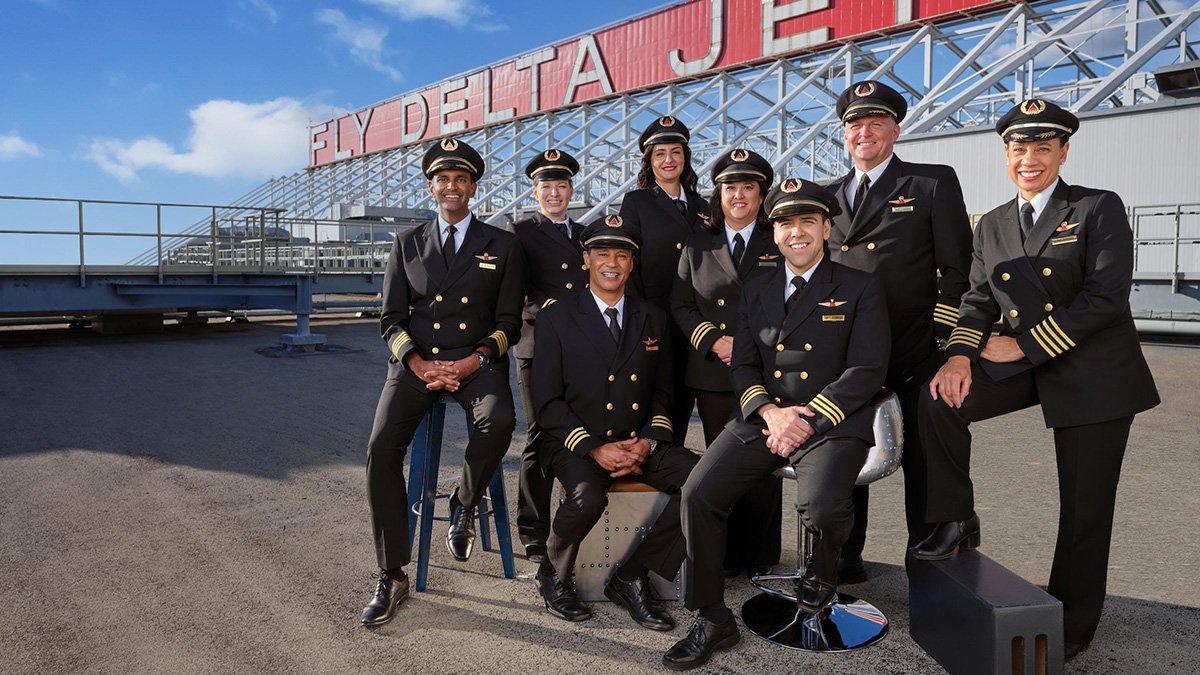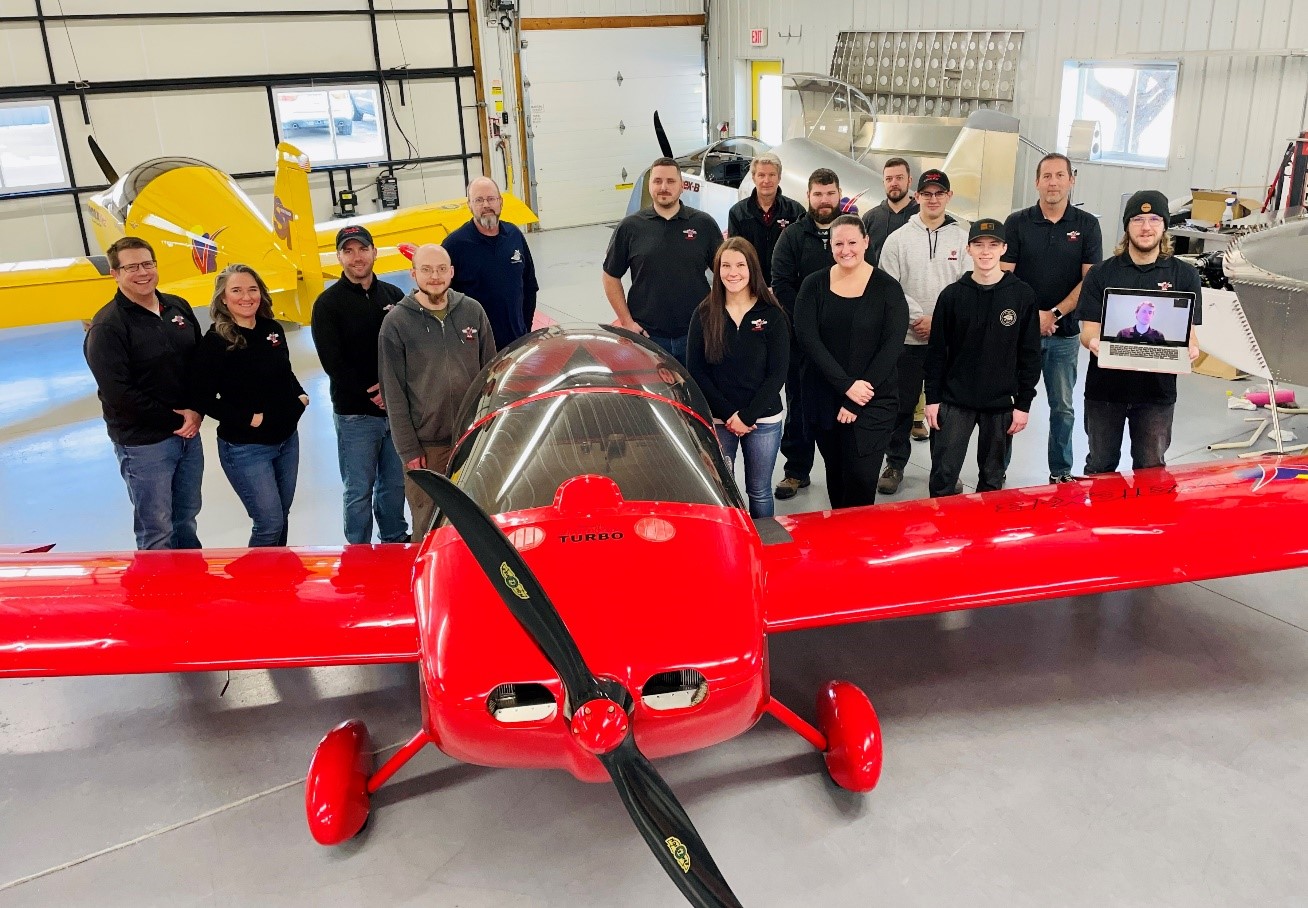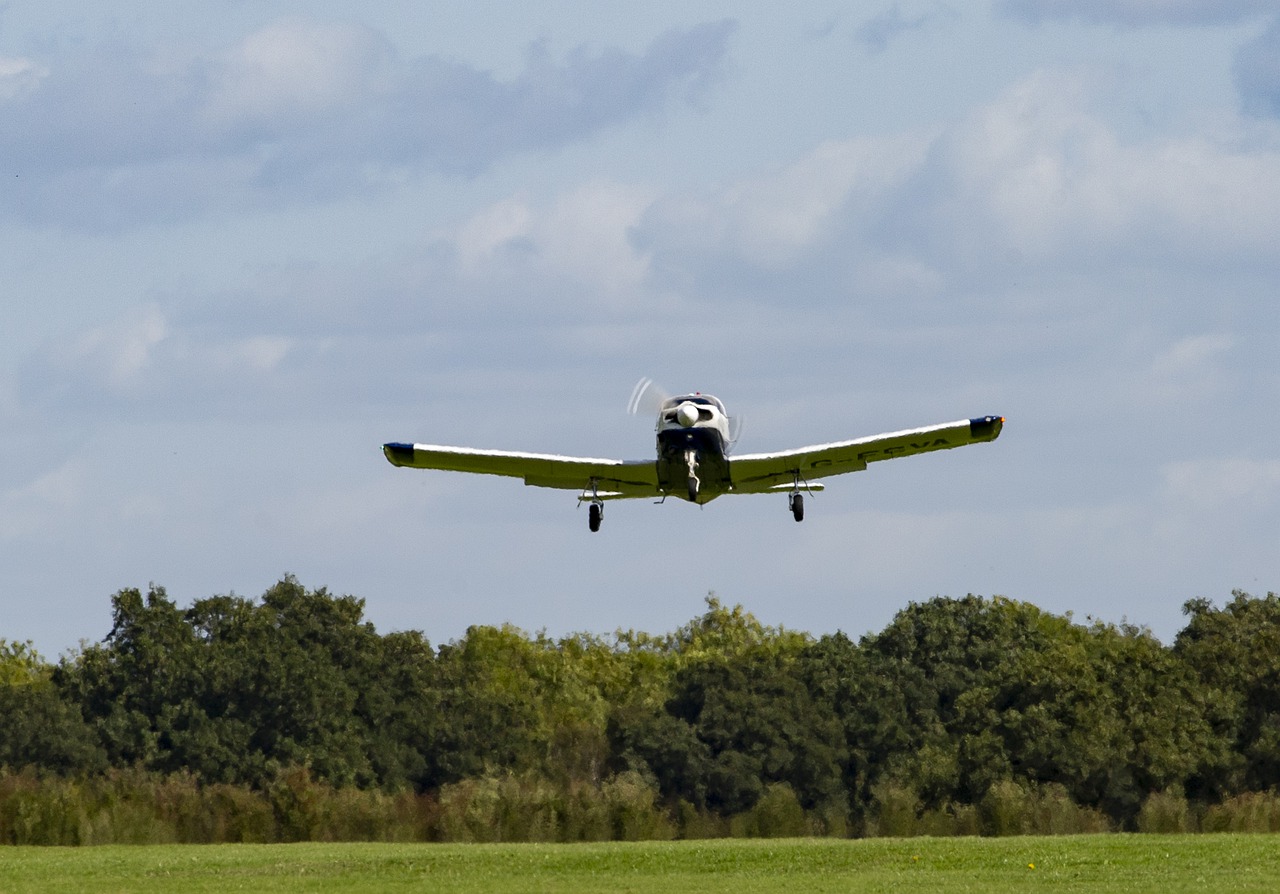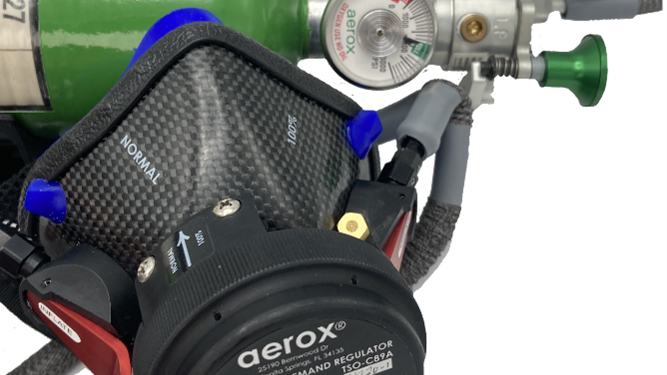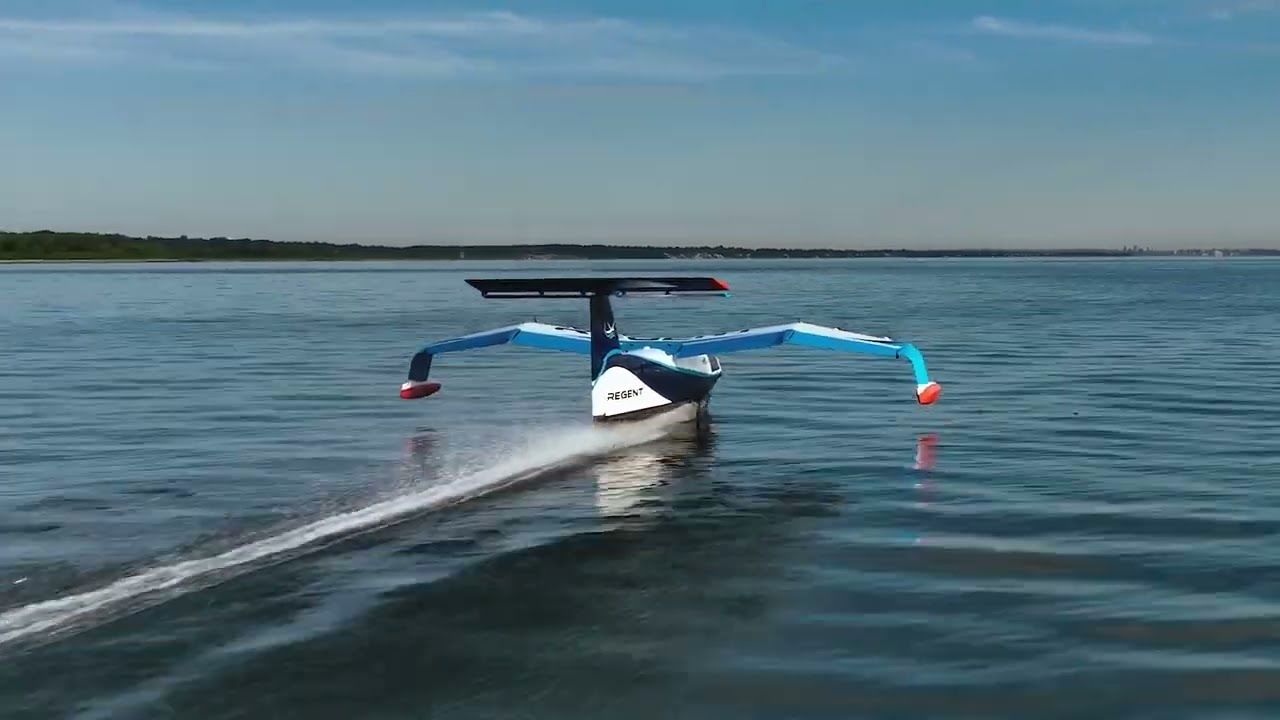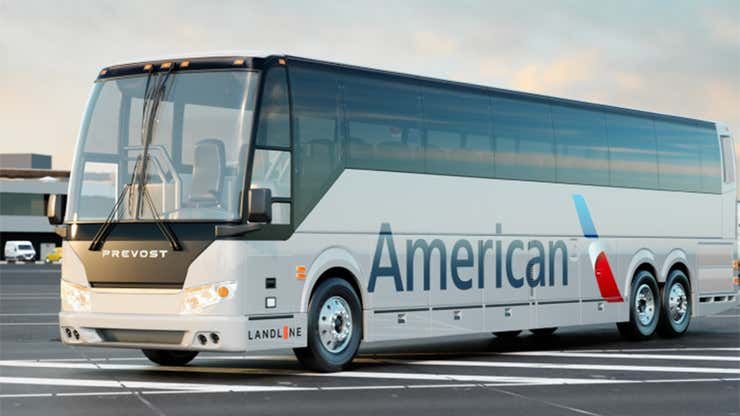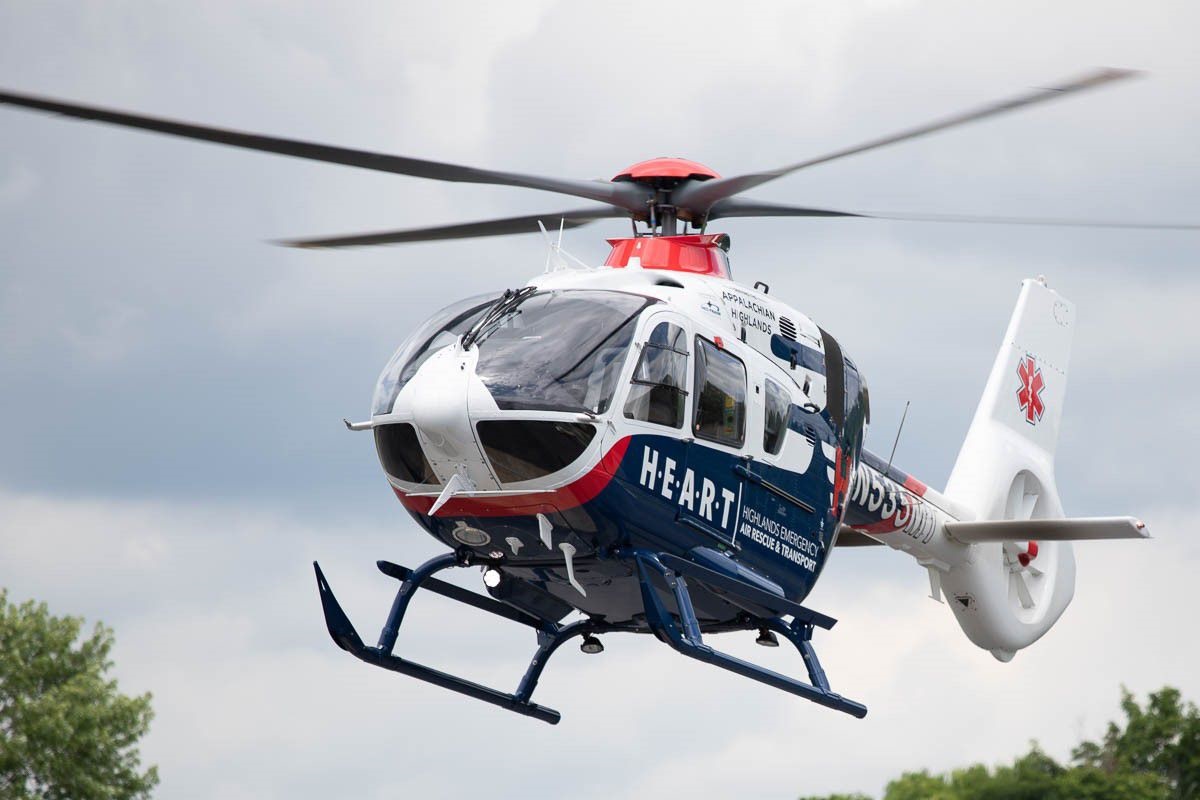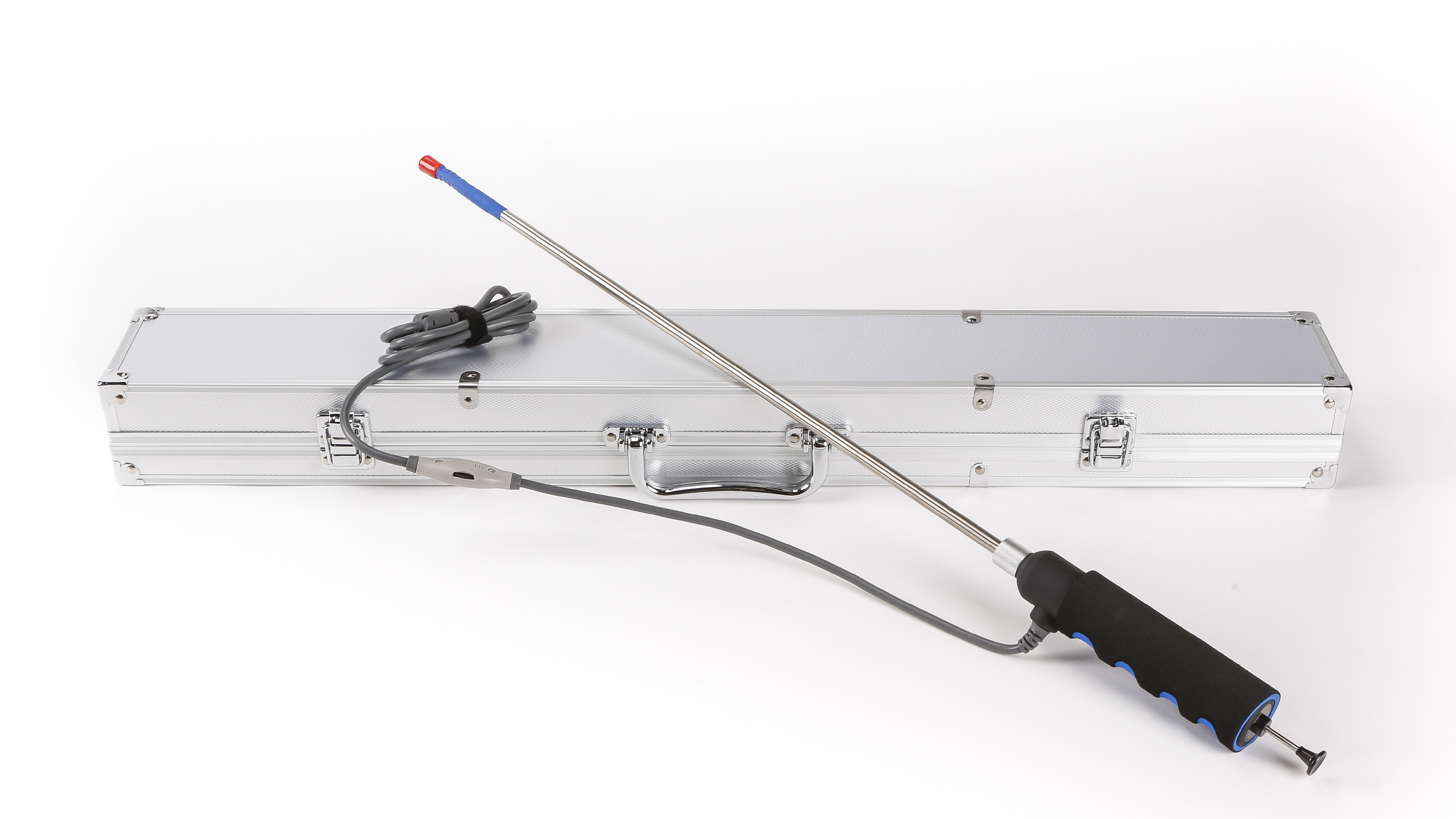Embraer E-Jet E170/E175
Embraer E-Jet E170/E175 user+1@localho… Tue, 10/04/2022 - 21:17 The E-Jet series is a family of regional jets (RJ) produced by Brazilian manufacturer Embraer S.A. that includes the E170 and E175. Based on the ERJ 170 type, the variants of the...
The E-Jet series is a family of regional jets (RJ) produced by Brazilian manufacturer Embraer S.A. that includes the E170 and E175. Based on the ERJ 170 type, the variants of the ERJ 170-100 are marketed as the E170, while the ERJ 170-200 uses the E175 commercial designation. Launched by Embraer at the 1999 Paris Air Show, the first flight of an E-Jet— an E170—took place on Feb. 19, 2002, from the company’s facilities in Sao Jose dos Campos, Brazil. Following its flight-test program, the first two E170 variants—the ERJ 170-100 STD and LR—were certified by the Brazilian National Civil Aviation Agency [Agencia Nacional de Aviacao Civil (ANAC)] on Feb, 19, 2004. Two additional variants of the ERJ 170-100 type—the ERJ 170-100 SU and SE—were certified later that year. Subsequent to its certification, the first E170s were delivered to LOT Polish Airlines and US Airways on March 8, 2004, with the first revenue flight of an E-Jet taking place between Warsaw and Vienna on March 17, 2004. Prior to that delivery, US Airways placed the North American launch order for the E170 in May 2003, an order that included commitments for 85 airplanes.
Less than 16 months after the first flight of the E170, the first flight of an E175 (Serial No. 0014) took place on June 14, 2003, with a second flight-test E175 (Serial No. 0017) making its first flight just weeks later on Aug. 7, 2003. The first variants marketed as the E175—the ERJ 170-200 STD and LR—were also certified in 2004, with additional variants receiving approval in September 2005 and February 2018. Following its certification in December 2004, the first delivery of an E175 was made to Air Canada on July 19, 2005.
In addition to the first-generation E170 and E175, a second-generation E175—dubbed the E175-E2—was announced at the 2013 Paris Air Show, with its entry into service initially expected to occur in 2020. Coinciding with the E2 program’s launch, U.S. regional carrier SkyWest Airlines placed the first order for the E175-E2 at that year’s Paris Air Show, an order that included firm commitments for 100 airplanes and purchase rights for another 100. The first E175-E2, registered as PR-ZXM, made its first flight on Dec. 12, 2019, from the airport adjacent to Embraer’s manufacturing facilities in Sao Jose dos Campos, beginning a flight-test program that will include three flight-test airframes. That first flight lasted 2 hr. 18 min. and “evaluated aircraft performance, flight quality and systems behavior,” with the takeoff and landing performed with the “fly-by-wire (FBW) controls in normal mode.”
Regardless of any differences between the variants of the E-Jet series, the type certificate for all variants of the ERJ 170 is held by Embraer S.A. of Sao Jose dos Campos, a certificate that was formerly held by Yabora Industria Aeronautica S.A.
|
E-Jet Series Variant |
Brazilian (ANAC) Certification Date |
E-Jet Series Variant |
Brazilian (ANAC) Certification Date |
|
ERJ 170-100 STD |
Feb. 19, 2004 |
ERJ 170-200 STD |
Dec. 22, 2004 |
|
ERJ 170-100 LR |
ERJ 170-200 LR |
||
|
ERJ 170-100 SU |
April 29, 2004 |
ERJ 170-200 SU |
Sept. 30, 2005 |
|
ERJ 170-100 SE |
Sept. 16, 2004 |
ERJ 170-200 LL |
Feb. 5, 2018 |
Cabin and Cargo Capacity
From a passenger-capacity standpoint, the variants of the E170 can accommodate 70-78 passengers, with the ERJ 170-100 STD and LR certified to accommodate the latter capacity figure. For those airframes, Embraer markets the 78-seat layout as a high-density configuration, with the seats in that configuration having a pitch of 30 in., 31 in. or 33 in. Another single-class configuration option for the E170 is advertised as having 72 seats with a 32-in. pitch, while a dual-class configured E170 offers 66 seats (six in a premium cabin that have a 40-in. pitch and 60 in the main cabin with a 32-in. pitch). In contrast, the ERJ 170-100 SU and SE have reduced capacities of 76 and 70, respectively. Beyond the space in the cabin, Embraer notes that the maximum cargo volume of the E170 is 508.18 ft.3, with the respective maximum loads of the forward and aft cargo compartments being 3,020 lb. and 2,271 lb.
The slightly larger E175 is able to carry more passengers than the E170, with the ERJ 170-200 STD and LR—marketed as the E175 Advanced Range (AR) and LR—both certified to seat up to 88 passengers. As is the case with the E170AR and LR, the E175AR and LR—which offer the highest seating capacity of the current ERJ 170 variants—are able to accommodate that passenger capacity in a high-density configuration, with that configuration having 88 seats with a 29-in. pitch. An alternative single-class configuration for the E175 accommodates 78 seats with a 32-in. or 33-in. pitch, while a possible dual-class configuration is promoted by Embraer as reducing that capacity to 76 passengers. Those 76 seats include 12 seats in a premium class that have a 36-in. pitch, as well as 64 seats in the main cabin that have a 31-in. pitch. While the E175SU and LL retain the same fuselage dimensions as the E175AR/LR, those variants have reduced respective capacities of 76 and 70. Supplementing the increased passenger capacity of the E175 are increases in the maximum cargo volume, as well as the maximum loads able to be carried in the forward and aft cargo compartments. The cargo volume is increased to 604.59 ft.3, while the forward and aft cargo compartments are able to accommodate up to 3,307 lb. and 2,535 lb., respectively.
The most recently certified E175 variant—the ERJ 170-200 LL—is marketed as the E175 Special Configuration (SC), an airframe that is limited to a maximum passenger capacity of 70 in order to meet the scope-clause requirements of U.S. carriers American Airlines, Delta Air Lines and United Airlines. Despite having its capacity capped at that lower amount, the airframe gives operators “enough cabin space to keep the same number of business-class and premium-economy seats as a 76-seat aircraft.” From a market perspective, Embraer describes the E175SC’s configuration as being “ideally suited for routes that have a high component of premium-fare demand.”
In contrast to the E175SC’s reduced capacity, capacity will be further increased on the in-development E175-E2, with that variant of the type featuring an extra row of seats in comparison to the prior-generation E175 variants. The highest-capacity configuration available for that airframe expected to be able to seat 90 passengers (42 seats with a 30-in. pitch and 48 seats with a 29-in. pitch). An alternative single-class configuration accommodates 88 seats (80 seats with a 31-in. pitch and eight with a 30-in. pitch), while a three-class configuration will reduce capacity to 80 seats (12 with a 36-in. pitch, 12 with a 34-in. pitch and 56 with a 30-in. pitch). The planned cargo compartment capacities include a total loading of 5,842 lb. and volume of 602.1 ft.3, with that loading divided between 3,307 lb. in the forward compartment and 2,535 lb. in the aft compartment. The volumes of those compartments are 288.2 ft.3 and 313.9 ft.3, respectively, with the loading and volume figures for the forward cargo compartment assuming a standard configuration.
Avionics
Despite the differences in dimensions and passenger capacity, there are a significant number of characteristics shared by the E170 and E175, including the type rating necessary for pilots. The first-generation versions of those airplanes are equipped with Honeywell’s Primus Epic integrated avionics system, which includes five 8 X 10-in. displays. The E170 and E175 E1 variants also incorporate an open-loop FBW flight control system that controls the airframe’s pitch and yaw. Part of an upgrade introduced on the first-generation E170 and E175 was Honeywell’s Next Generation Flight Management System (NGFMS), an upgrade that is available on new build airframes—as well as a retrofit option for existing ones—from 2015. Also found on Boeing 747-8 and Gulfstream’s G650 airframes, that upgraded FMS improves the efficiency of equipped airframes through the inclusion of a “cost index” and “ECON speeds,” features that improve fuel burn. Other efficiency benefits of the NGFMS that are promoted by Honeywell include the ability to perform “off-idle descent[s]” and the “automated calculation” of landing speeds. The navigational benefits of the NGFMS include the ability of equipped airframes to perform required navigation performance authorization required (RNP AR) approaches to 0.1 nm, as well as localizer performance with vertical guidance (LPV) instrument approach procedures. Safety is enhanced through the “next generation of Honeywell’s Runway Awareness and Advisory System (RAAS)” that features an “Advanced SmartRunway option” which incorporates “key components of” the company’s SmartLanding system. According to the avionics manufacturer, the “Advanced RAAS” improves the safety of operations through by reducing the risk of runway excursions through by providing crews with “early identification and crew alerting of an unstable approach.”
The E175-E2 incorporates Honeywell’s Primus Epic 2 integrated avionics system that features “advanced graphics capabilities” and the NGFMS, as well as “large landscape displays.” The five displays on the first-generation E170/E175 are replaced by four 13 X 10-in. displays on the E175-E2, while both the first- and second-generation E-Jet airframes are able to be equipped with a pair of optional head-up displays (HUD).
Supplementing the E2’s upgraded avionics is a closed-loop FBW flight control system that was “developed in-house,” and which is also described by Embraer as being as being a fourth-generation system. In comparison to the open-loop FBW system found on first-generation series of E-Jets, the E2 airframes have an FBW system that includes features such as “full envelope protection in all phases of flight” and which has two modes: normal and direct. In comparison to the FBW system found on the first-generation E-Jets—with those airframes being “designed conventionally and an FBW [system] was added”—the E175-E2’s FBW system is more integrated. That integration—the fact that the FBW system was part of the E-Jet E2’s design “from the beginning”—had a number of impacts on the second-generation airframes. One is example of that is the reduced weight of the wing structure, which was enabled “because the ailerons are used in more situations throughout the flight.”
Mission and Performance
The primary competition for the E170 and E175 is MHIRJ’s (formerly Bombardier’s) CRJ series—specifically, the CRJ700 and CRJ900—with the E170 comparable to the former CRJ airframe and the E175 similar to the latter. Comparable limitations of both the E170 and CRJ700—with the three variants of the latter based on the CL-600-2C10 type—include maximum passenger seating capacity, with the CRJ700 [CL-600-2C10 (Regional Jet Series 700)] certified to accommodate up to 68 passengers, a limitation that is increased on the CRJ701 (Regional Jet Series 701) by two to 70 passengers. The CRJ702 (Regional Jet Series 702) matches the 78-passenger capacity of the E170 AR and LR, while being limited to a lower range of 1,400 nm. Although the larger CRJ900, which is based on the CL-600-2D24 type, has a greater maximum passenger capacity (90) “when fitted with an approved interior” than any of currently produced E175 variants—the E175-E2 is expected to be certified to the same capacity—the range of that CRJ-series airframe is less than the competing Embraer airframes. To that end, while the in-production E175 variants are capable of ranges exceeding 2,000 nm, the CRJ900 is promoted as having a range of 1,550 nm. Another limitation that is higher on the E170/E175 than the CRJ700/CRJ900 is maximum takeoff weight (MTOW), with the highest such limitation of the CRJ900 being 4,500 lb. less than the highest limitation of the E175. Finally, the E170 and E175 can be further distinguished from the CRJ700 and CRJ900 by their design, with those Embraer airframes not being “expansions or contractions of existing aircraft.”
|
Comparison: E170/E175 and CRJ700/900 |
||||||||
|
Commercial Designation |
E170AR |
E170LR |
E175AR |
E175LR |
CRJ702 |
CRJ900 |
||
|
Maximum Capacity |
78 |
88 |
78 |
90 |
||||
|
Range (nm) |
2,150 |
2,100 |
2,200 |
2,150 |
1,400* |
1,550 |
||
|
Engines (2x) |
General Electric CF34 |
|||||||
|
-8E5 or -8E5A1 |
-8C1 or -8C5B1 |
-8C5 or -8C5A1 |
||||||
|
Maximum Takeoff Weight (MTOW)(lb.) |
85,097 |
89,000 |
85,517 |
75,000 |
84,500 |
|||
|
Maximum Landing Weight (lb.) |
73,414 |
73,413 |
75,177 |
74,957 |
67,000 |
75,100 |
||
*The 1,400-nm range is not specific to the CL-600-2C10 (Regional Jet Series 702)
Beyond the CRJ700 and CRJ900, another airframe that is poised to compete with the first-generation E175, as well as the E175-E2, is Mitsubishi Aircraft Corp.’s SpaceJet M100, an airplane that is also powered by a variant of Pratt & Whitney’s geared turbofan (GTF) engine series. Specifically, the M100 will feature a variant of the PW1200G engine. With respect to passenger accommodations, the M100 is planned to have a maximum capacity of 88, with those seats having a 29-in. pitch. According to the Mitsubishi Aircraft Corp., the typical single-class configuration will accommodate 84 seats with a 31-in. pitch, while, when configured in a triple-class arrangement, the cabin can seat 76 passengers in 12 premium-class seats that have a 36-in. pitch, 12 premium-economy seats with a 33-in. pitch and 52 economy-class seats that offer a 30-in. pitch. As it is currently advertised, the SpaceJet M100—with a range of 1,910 nm based on a passenger weight of 225 lb., standard conditions, no wind, the airplane operated at the long-range cruise speed and with a 100-nm alternate—would fall short of the range capabilities of the E170 and E175.
Although the performance figures of the E170 and E175 differ in a number of ways, both share a common maximum operating limit speed (MMO) of 0.82 Mach, as well as a maximum operating altitude of 41,000 ft. In addition to that maximum operating altitude for en route operations, both the E170 and E175 are limited to a maximum altitude on takeoff of 10,000 ft. However, given the differences between the AR and LR variants of both the E170 and E175, the performance figures for those airframes differ as well. For instance, the E170AR and LR are promoted as having takeoff field lengths—based on the MTOW of those variants, standard conditions, sea-level altitude and CF34-8E5 (E170LR) and -8E5A1 (E170AR) engines—of 5,394 ft. and 5,190 ft., respectively. The comparable landing fields lengths—assuming the maximum landing weights (MLW), standard conditions and sea-level altitude—differ by slightly more than 40 ft. at 4,072 ft. and 4,029 ft. Finally, the 2,150-nm range of the E170AR and 2,100-nm range of the E170LR assume an airframe configured in a single-class configuration—with seats that have a 32-in. pitch—all seats occupied by a passenger with an assumed weight of 220 lb. and the airplane operated at the long-range cruise speed and with “typical mission reserves.” Finally, the time to climb to flight level (FL) 350—assuming that an airplane has a takeoff weight (TOW) for a 500-nm flight and is fully loaded with passengers—is 16 min.
The comparable figures for the E175AR and LR are based on the same criteria as those for the E170, with the respective takeoff field lengths noted as being 7,362 ft. and 5,656 ft. Despite that difference in takeoff field lengths, the landing field lengths of those variants differ by only 6 ft.—4,137 ft. (E175AR) and 4,131 ft. (E175LR)—while the range of these E-Jets also differs by 50 nm. To that end, the E175AR is capable of operating to a range of 2,200 nm, while the E175LR reduces that figure to 2,150 nm. As is the case with the aforementioned E170 variants, these versions of the E175 are both promoted as being able to climb to FL350 in the same amount of time (18 min.).
Also based on the same criteria—with the exception of the takeoff distance assuming a standard engine—the performance of the second-generation E175-E2 is expected to include takeoff and landing field lengths of 5,676 ft. and 4,413 ft., respectively. The 41,000-ft. maximum operating altitude of the first-generation E175 will be retained, while the airframe’s range—also based on the same criteria except for a 100-nm alternate—is expected to be 2,000 nm.
Variants
|
E170 Specifications |
|||||
|
Type Designation |
ERJ 170-100 STD |
ERJ 170-100 LR |
ERJ 170-100 SU |
ERJ 170-100 SE |
|
|
Commercial Designation |
E170AR |
E170LR |
E170SU |
E170SE |
|
|
Maximum Capacity |
78 |
76 |
70 |
||
|
Range (nm) |
2,150 |
2,100 |
|
|
|
|
Engines (2x) |
General Electric CF34-8E5 or -8E5A1 |
||||
|
Basic Operating Weight* (lb.) |
45,636 |
||||
|
Maximum Takeoff Weight (MTOW)(lb.) |
85,097 |
||||
|
Maximum Landing Weight (lb.) |
73,414 |
73,413 |
|||
|
Maximum Payload* (lb.) |
21,480 |
21,252 |
|||
|
Wingspan |
85 ft. 4 in. |
||||
|
Wing Area |
783 ft.2 |
||||
|
Length |
98 ft. 1 in. |
||||
|
Height |
32 ft. 3 in. |
||||
*In an airplane with a standard configuration
|
E175 Specifications |
||||||||
|
Type Designation |
ERJ 170-200 STD |
ERJ 170-200 LR |
ERJ 170-200 SU |
ERJ 170-200 LL |
|
|||
|
Commercial Designation |
E175AR |
E175LR |
E175SU |
E175SC |
E175-E2 |
|||
|
Maximum Passenger Capacity |
88 |
76 |
70 |
90 |
||||
|
Range (nm) |
2,200 |
2,150 |
|
|
2,000 |
|||
|
Engines (2x) |
General Electric CF34-8E5 or -8E5A1 |
Pratt & Whitney PW1714G |
||||||
|
Basic Operating Weight* (lb.) |
49,604 |
48,250 |
|
47,399 |
|
|||
|
Maximum Takeoff Weight (MTOW)(lb.) |
89,000 |
85,098 |
98,326 |
|||||
|
Maximum Landing Weight (lb.) |
75,177 |
74,957 |
88,184 |
|||||
|
Maximum Payload* (lb.) |
22,487 |
|
22,487 |
23,368 |
||||
|
Usable Fuel (gal./lb.) |
3,071/20,785 |
|
3,071/20,785 |
2,815/19,058 (Max) |
||||
|
Wingspan |
85 ft. 4 in./93 ft. 11 in. |
102 ft. 11.9 in. |
||||||
|
Length |
103 ft. 11 in. |
106 ft. 2.2 in. |
||||||
|
Height |
32 ft. 4 in. |
33 ft. 5 in. |
||||||
*In an airplane with a standard configuration
GE CF34-8 Engines
All variants of the E170, as well as the first-generation E175, are powered by a pair of General Electric (GE) CF34-8E engines that are described as being in the 14,500-lb. thrust class of turbofan engines. Specifically, the ERJ 170-100 and -200 are certified to be equipped with the CF34-8E5 and -8E5A1 variants. According to the FAA type certificate data sheet (TCDS) for the CF34-8E engines, they are axial-flow, dual-rotor, high-bypass-ratio turbofan engines that have a “single-stage fan.” Additional components of those CF34 engines include an annular combustion chamber, thrust reverser and axial compressor, the latter of which has ten stages. Comparatively, the high- and low-pressure turbines have two and four stages, respectively, with both engine variants also featuring a full authority digital engine control (FADEC) system. These variants of the CF34-8E are promoted as having a noise level that “meets or surpasses” the International Civil Aviation Organization’s (ICAO) Chapter 4 standards, with the level of emissions produced meeting or surpassing the Committee on Aviation Environmental Protection’s CAEP/6 standards. Furthermore, the CF34-8E “incorporates a nacelle design specifically tailored to the [E170/E175] underwing installation.”
Pratt & Whitney PW1714G
The second-generation E175-E2 will be distinguished not only by increased maximum weights and passenger capacities, but also by the engines that power the airframe. In contrast to the CF34 engines that powered all first-generation E-Jets, all E-Jet E2 airframes will be powered by a pair of Pratt & Whitney GTF engines. The specific GTF engine that will power the E175-E2 is the PW1714G which is “aeromechanically identical” to the PW1200G that powers Mitsubishi’s SpaceJet series of airframes and, according to Pratt & Whitney, provides both economic and environmental benefits. Those benefits—which include a “double-digit reduction in fuel consumption,” as well as a noise footprint and nitrogen oxide (NOX) emissions (from CAEP/6) that are reduced by up to 75% and 50%, respectively—are enabled by the engine’s “geared architecture, combined with an all-new, advanced engine core.” Specific features of the PW1700G include a 56-in. fan diameter and 9:1 bypass ratio, with the internal engine components including an eight-stage high-pressure compressor, two-stage low-pressure compressor, two-stage high-pressure turbine and three-stage low-pressure turbine. The engine manufacturer also states the PW1700G is capable of providing between 15,000 and 17,000 lb. of thrust.
E170 and E170
The MTOW of the E170SU and SE, as well as the MLW for all E170 variants, differs based on whether a particular airframe incorporates the modifications of certain service bulletins (SB), with the ERJ 170-100 STD certified to five MTOWs. Although Embraer has certified four variants of the ERJ 170-100 that serves as the basis for the E170, there are no plans to bring to market a second-generation version of that airframe.
Beyond the passenger capacity and performance-related distinctions, other differences between the current-generation E170 and E175 variants include cargo volume, weights and dimensions, with the E175’s fuselage measuring nearly 6 ft. longer when compared to the E170. In addition to the E175’s longer fuselage, other dimensional changes to the E175 include an increased wingspan on some airframes. Indeed, in contrast to the E170—which has a common set of dimensions—E175s can also be distinguished based on dimensions. Specifically, whether they feature extended winglets or incorporate the modifications of SB 0170-57-0058. Airframes that fall into that category have a wingspan that is 8 ft. 7 in. greater than what is found on E175s that do not have extended wingtip or incorporate the aforementioned SB, with that change replacing the vertical winglets with a wingtip that has a dihedral of 45 deg. Although the changes made to the wingtip resulted in additional “structure [being] required to compensate for the increased bending loads of the wing,” the “the aerodynamic benefits” of the modification more than offset the added weight. Specific changes to the wing structure made to accommodate the additional bending loads of the new winglet involved the “local strengthening [of] the wingbox,” as well as “skins and stub wing where the unit attaches to the fuselage.” The upgrade that introduced those winglets for the E175—as well as avionics, interior and systems enhancements—was announced by Embraer in January 2013, alongside an order for 47 E175s from U.S. regional airline Republic Airways. At the time, the airframe manufacturer noted that Republic would be the first operator to receive an E175 with the aerodynamic changes, updated winglets and optimized systems.
Prior to the introduction of the updated winglets, the first improvements made to improve the fuel consumption of the E175 were made in 2013 and involved “a series of aerodynamic ‘clean up’ features to reduce drag,” as well as the “optimization of the” anti-ice and environmental control systems, with the goal of latter being to “reduce excessive use of bleed air.” Another fuel-burn improvement “package” introduced the new wingtip and also involved the aerodynamic cleanup of the anti-collision light and auxiliary power unit (APU) inlet. Described as an “interim step toward developing the” E-Jet E2 airframes, the objective of this upgrade was to “form a foundation for development of the E2 generation [airframes], while at the same time bridging the gap between the current production versions and their successors.” Avionics changes made include the previously mentioned NGFMS was part of this improved E175, while enhancements to the airframe’s components—as well as increased maintenance intervals—were promoted as “increasing aircraft productivity and lower[ing] maintenance costs.” Other benefits to operators of upgraded airframes include the fuel burn being lowered by 6.4% in comparison to the “baseline model,” an improvement on the company’s initial expectation when the upgrades were announced in 2013 of a 5% reduction. The majority of that fuel burn improvement is the result of the aforementioned 45-deg. wingtip that increased the E175’s wingspan.
E175 High-and-Hot Upgrade
Another upgrade to the E175—a “hot-and-high performance improvement package”—was developed by Embraer and launched by United Airlines, with that upgrade allowing equipped airframes “to fly an additional 500 nm from airports such as Denver” that are at high elevations and in hot conditions. The incorporation of the hot-and-high upgrade—which increases the E175’s range by 50% in comparison to “the baseline aircraft’s 1,000-nm capability”—requires that an airframe was delivered subsequent to April 2014, as well as features the extended winglet design noted above and “other aerodynamic enhancements.” Indeed, the hot-and-high upgrade leverages performance that is provided by the “extended-span variant” of the E175.
E175SC
Certified in February 2018, the aforementioned E175SC—in addition to having a reduced seating capacity to meet the requirements of U.S. airline scope clauses—is also sold at a reduced cost and has a lower MTOW than the E175AR and LR. Despite having a reduced capacity and MTOW, because the E175SC is based on the “regular E175 airframe, it can easily be modified to the typical 76-seat configuration.” However, because that variant of the E175 is sold “at E170 pricing,” that modification “will have to go through Embraer,” with the cost “bridg[ing] the gap between the price for which the aircraft was sold and the standard E175 pricing.”
E175-E2
In comparison to the current variants of the E175, the E175-E2 will use 16% less fuel, while the airframe’s maintenance costs are promoted by Embraer as being by 25% lower on a per-seat basis. From a maintenance perspective, the company promotes the second-generation airplane as having, along with the E190-E2 and E195-E2, “the longest maintenance intervals in the single-aisle category.” Although the E175-E2 is planned to have a maximum capacity that is only slightly higher than what is currently available with the E175AR and LR, the anticipated increase in MTOW will be greater than 9,000 lb. in comparison to highest-MTOW variant of the first-generation E175. Other changes incorporated into the E2 will include a new wing, which is a “downsized version” of the wing found on the E190-E2. Replacing the wingtips found on the ERJ 170-100/-200 are raked wingtips, while the landing gear are also new in order to “accommodate the larger-diameter engines.” Overall, the percentage of new systems in comparison to the first-generation E175 is 75%. It is because of the changes in MTOW—which are attributed to the changes to the wing and the PW1700G engines—and passenger capacity that the E175-E2 falls outside of the scope clauses contained in the pilot contracts of the aforementioned U.S. airlines, with those contacts generally restricting RJs operated by regional partners to no more than 76 seats and an MTOW of 86,000 lb.
Program Status/Operators
In addition to being the location of Embraer’s headquarters and where first flight of each E-Jet series airframe has taken place, Sao Jose dos Campos is also where Embraer produces the company’s commercial airframes.
Because of the previously discussed issues with scope clause compliance, that ability of SkyWest to operate the E175-E2s that the company ordered—and consequently the order for those airframes—is in doubt. Indeed, in 2018 Embraer removed SkyWest’s order—“which was conditioned on scope clause change”—from its backlog. As a result of the uncertainly regarding scope clause expansion and the ability of regional airlines in the U.S. to operate airplanes that exceed the current limitations for legacy airlines, Embraer, in 2016, pushed back the entry-into-service date of the E175-E2 by a year to 2021. A further delay to was announced by the company in August 2020 when it announced it second quarter 2020 financial results, with that delay being attributed to the impact of the Covid-19 pandemic. As a result of the impact of Covid-19, “the start of operations with the E175-E2” was delayed to 2023. Less than nine months after that delay was announced, Embraer announced a further delay to the beginning of operations by a further year, with the event now expected to occur in 2024.
Following the multiple delays to the E175-E2’s entry-into-service date, Embraer stated in a February 2022 regulatory filing that the “development program” of the variant would be paused for a period of three years. According to that filing, the cause of the “re-programming of activities” is the result several factors, including the previously discussed scope-clause issues with U.S. airlines, “continuing interest” from U.S. operators in the ”current E175” and commercial aviation market conditions globally. The company stated that it expects to resume development following the three-year suspension, with the airframe then expected to enter service “between 2027 and 2028.”
With respect to flight testing, in comparison to the four airframes used for the E190-E2’s flight-test program, as well as the two used for the E195-E2, Embraer plans to use three airframes for the testing of the second-generation E175. The first two flight-test airframes are intended to be utilized to conduct tests related to aerodynamics, performance and systems, while the third airframe will have a cabin with “interior furnishings” and “be used to validate maintenance tasks.”
On July 5, 2018, Embraer announced that they had signed a memorandum of understanding with Boeing to create a joint venture involving the former company’s commercial aircraft and services business. The result of that agreement—which was approved by Embraer’s shareholders on Feb. 26, 2019—would have had “Boeing hold[ing] an 80% ownership stake in the joint venture,” with Embraer owning the other 20%. While the completion of the deal was expected to occur “by the end of 2019”—with Embraer’s commercial aircraft business to be rebranded as Boeing Brasil – Commercial—Boeing announced on April 25, 2020, that the company had terminated the “Master Transaction Agreement” that it had made with Embraer. The result of that termination was the cancellation of joint ventures for both Embraer’s commercial business and the Brazilian company’s C-390 multi-mission transport airplane. Boeing noted at the time of the termination of the agreement that the joint venture had “received unconditional approval from all necessary regulatory authorities, with the exception of the European Commission.” Although the type certificates for both the ERJ 170 and ERJ 190 types were transferred to Yabora Industria Aeronautica S.A. from Jan. 31, 2020, until Jan. 1, 2022, those types certificates were transferred back to Embraer S.A. on the latter date.
References
- AWIN Article Archives
- Embraer, GE Aviation, Honeywell, MHIRJ and Pratt & Whitney Commercial Materials
- ANAC TCDS (ERJ 170, ERJ 190)
- FAA TCDS (ERJ 170, CF34)
- Securities and Exchange Commission Form 6-K (Embraer S.A.)




 admin
admin 













